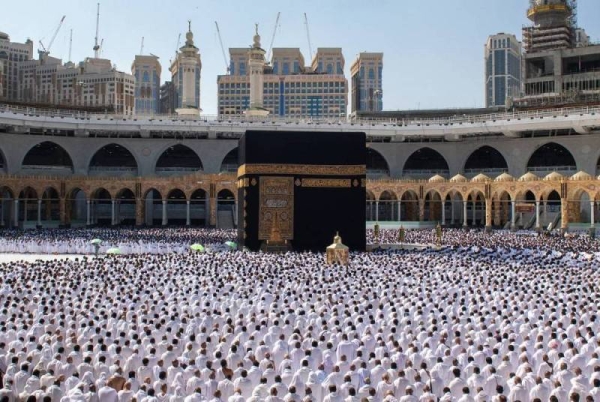
MAKKAH: Major organizational plans for Ramadan covering the Grand Mosque in Makkah and Prophet’s Mosque in Madinah were on Monday unveiled by Saudi government officials.
Dr. Abdulrahman Al-Sudais, president of the General Presidency for the Affairs of the Two Holy Mosques, announced the launch of one the biggest ever operations at the two sites for the holy month.
Speaking during a press conference held at general presidency headquarters in Makkah, alongside Minister of Commerce and acting Minister of Media Dr. Majid bin Abdullah Al-Qasabi, he pointed out that despite the gradual easing of precautionary measures against COVID-19, health and safety practices would continue to be applied at the same levels as during the height of the coronavirus pandemic.
Al-Sudais said everything was being done to ensure the provision of the best possible services and environment for worshippers to perform their rituals with ease.
He noted that the latest technology had been employed to improve the visitor experience including artificial intelligence systems, digitization programs, and electronic apps in a range of languages.
Nearly 12,000 male and female workers had been lined up to cater for the needs of pilgrims during Ramadan, and the Third Saudi Expansion, the King Fahd Expansion, and all the courtyards of the Grand Mosque would be open for worshippers, Al-Sudais added.
The presidency had also allocated the courtyard, ground floor, and basement of the Mataf for pilgrims only in order to ensure the smooth flow of people, while special attention had been paid to the elderly and those with disabilities through the designation of specific paths and dedicated sites equipped with the latest technologies.
After a two-year hiatus, Al-Sudais announced the return of iftar travel to the Grand Mosque by issuing 2,000 permits, adding that Zamzam water would be sent to soldiers stationed on the Kingdom’s southern borders throughout the fasting period.
Al-Qasabi said: “I am honored to participate in the general presidency’s inauguration of the Ramadan plan, and its media campaign for 2022, which enhances the role of the media in conveying the voice and message of the Two Holy Mosques to the whole world, and broadcasting translated Taraweeh and Tahajjud prayers live, in addition to the targeted awareness and educational programs.”
General presidency spokesman, Hani bin Hosni Haidar, said seven members of the Council of Senior Scholars would participate in lessons at the Grand Mosque, while the teachers at the Makkah site would offer 425 lessons for visitors and pilgrims. He noted that the general presidency would also be providing three hi-tech awareness centers to support its vision 2024 aims, with 60 sheikhs on hand to answer questions.
Haidar pointed out the use of AI and interactive screens, including the deployment of robots for sterilization work, distributing Zamzam water, and answering inquiries, and the installation of eight interactive, 34 spatial guidance, and four guidance screens in different languages.
He added that the King Abdulaziz, King Fahd, and Baab-al-Salaam gates had been allocated for the entry and exit of pilgrims, along with 144 entrance doors for worshippers, and the Ajyad, Al-Shabaka, and Al-Marwah bridges.










